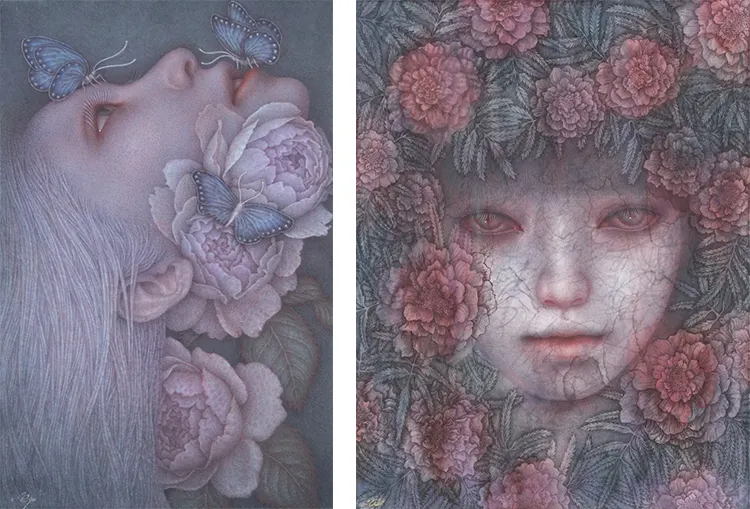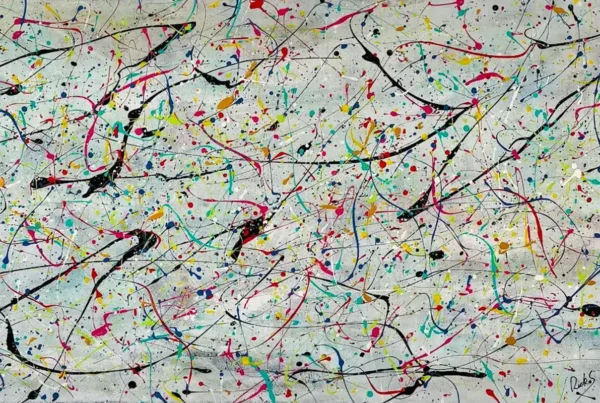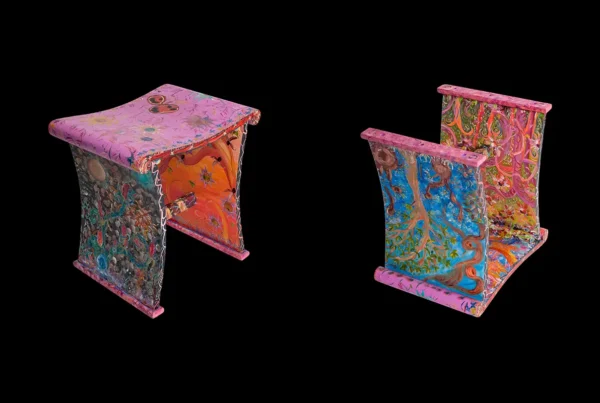A Journey Into the Unseen
Atsuko Goto’s art exists in a delicate, liminal space—where dreams and reality intertwine, and where emotions take on a spectral form. Her paintings are haunting yet serene, imbued with a quiet melancholy that lingers in the viewer’s mind. With figures that appear weightless, dissolving into their surroundings, her work evokes a sense of longing, solitude, and introspection.
Her journey as an artist began with an innate fascination with the subconscious—those fleeting emotions and half-remembered visions that reside just beneath the surface of awareness. Goto pursued her studies at the Tokyo University of the Arts, immersing herself in traditional painting techniques before expanding her artistic perspective at the National School of Fine Arts in Paris. The cultural contrast between Japan and France deepened her understanding of how perception shapes artistic expression, reinforcing her desire to explore the intangible aspects of human experience.
Her work is often described as ethereal, evoking dreamlike imagery that seems to exist outside of time. By merging human figures with natural elements—birds, flowers, and other organic forms—she seeks to capture the invisible threads that connect all living things. Drawing inspiration from Shinto beliefs, she portrays an unseen spiritual energy within nature, creating compositions that feel both deeply personal and universally resonant.
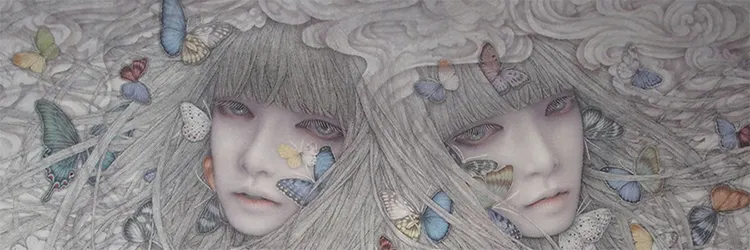
Atsuko Goto: The Language of Dreams and the Subconscious
Dreams serve as the foundation of Goto’s artistic vision, providing a gateway to the subconscious where emotions manifest in strange and fragmented forms. She sees them as reflections of an inner world—beautiful yet unsettling, serene yet mysterious. Her figures often appear lost in reverie, their expressions caught between tranquility and sorrow, as if suspended in a fleeting moment of dreamlike contemplation.
This sense of ambiguity is central to her work. By blurring the lines between the tangible and the ephemeral, she invites viewers to interpret her paintings through their own emotions and experiences. The figures in her compositions are not fully present, nor entirely absent; they exist in a liminal space, where memory, longing, and nostalgia converge. This duality—simultaneously intimate and distant—mirrors the way emotions are often felt but not easily expressed.
Her exploration of the subconscious is not limited to individual emotions but extends to a collective sense of spirituality. Influenced by the Japanese belief that nature is imbued with unseen spirits, she often intertwines human figures with organic elements. This fusion symbolizes a quiet harmony between life and death, presence and void, reinforcing the idea that every living thing carries an invisible essence that shapes its existence.
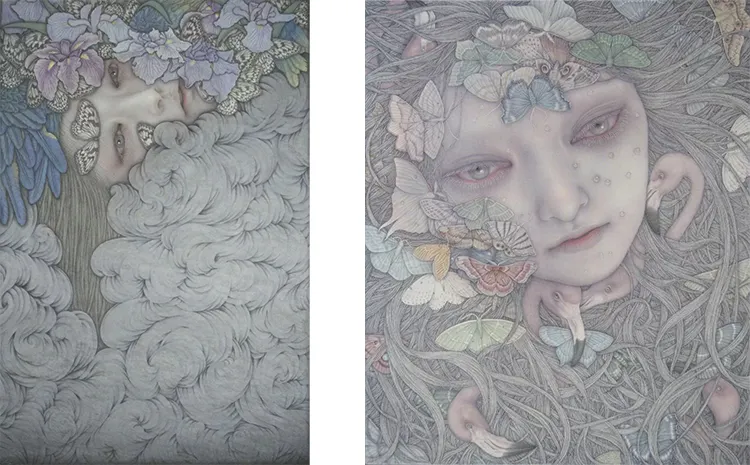
Fragile Materials, Translucent Forms
Goto’s artistic process is as meditative as her subject matter. She carefully selects materials that enhance the delicate and ephemeral quality of her work, favoring pigments like lapis lazuli, which she mixes with ink and gum arabic to create a ghostly translucence. This technique allows her figures to appear as though they are fading in and out of existence, their forms dissolving into the surrounding atmosphere.
The choice of surface is equally significant. Instead of traditional canvas, she applies these pigments to cotton, a material that softens the edges of her imagery and gives her work an organic, almost otherworldly texture. The resulting effect is one of quiet suspension, as if the subjects of her paintings exist between dimensions—neither fully emerging from nor entirely vanishing into their surroundings.
Her method is slow and introspective, reflecting the themes she explores. By layering pigments and allowing them to blend subtly, she creates compositions that feel like memories—fragile, fading, and tinged with an elusive sense of longing. Each piece is a visual representation of emotions that are felt but difficult to define, embodying the transient nature of dreams and the subconscious.
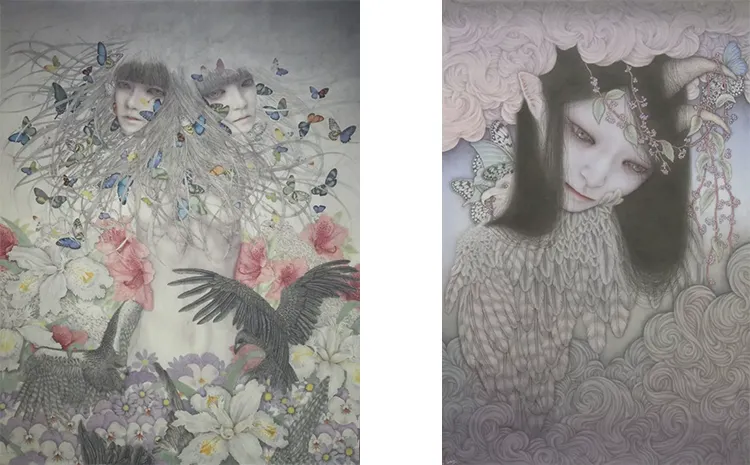
Atsuko Goto: The Emotional Landscape of Isolation and Reflection
Themes of solitude, longing, and emotional restraint permeate Goto’s work, reflecting aspects of Japanese culture where deep emotions are often internalized rather than outwardly expressed. Her figures appear serene on the surface, yet they carry an unspoken sorrow—an underlying sense of quiet desperation that resonates through her compositions. This contrast between calmness and melancholy is an essential aspect of her artistic language.
Her perspective on isolation deepened in the aftermath of the 2011 earthquake in Japan, a moment that profoundly affected her understanding of human emotion and collective experience. She observed a quiet resilience in the people around her—a strength that coexisted with an overwhelming sense of loneliness. This emotional complexity found its way into her paintings, where figures often seem enclosed within their own silent universes, connected yet distant, as if suspended between acceptance and despair.
Despite these melancholic undertones, Goto’s work does not seek to convey hopelessness. Instead, it invites introspection, offering a space where viewers can project their own emotions and experiences. By capturing the delicate balance between beauty and sorrow, presence and absence, she creates a visual language that transcends cultural boundaries, speaking to the universal human experience of longing, memory, and the ever-shifting nature of the subconscious.
